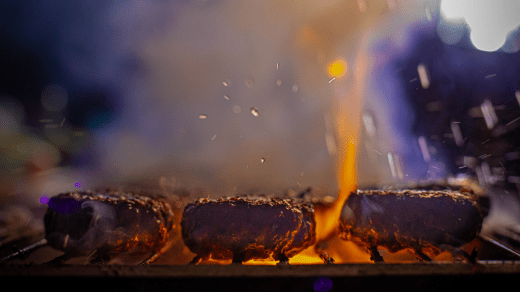Grilling meat to perfection is a skill that every food lover and home cook aspires to master. However, achieving juicy and flavorful meat can sometimes seem elusive. Continue reading to discover the essential secrets to help grill enthusiasts elevate their cooking and enjoy mouth-watering results every time.
Choose the Right Cut of Meat
Selecting the right cut of meat is the foundation for juicy grilling. Opt for cuts with good marbling, such as ribeye, sirloin, or pork chops. Marbling refers to the intramuscular fat that melts during cooking, adding flavor and moisture to the meat. Avoid lean cuts, which tend to dry out quickly on the grill.
Master the Marinade
Marinating meat adds flavor while also tenderizing it, making it juicier. Create a marinade with a balance of acid (like vinegar or citrus juice), oil, herbs, and spices. Allow the meat to marinate for at least 30 minutes, or up to 24 hours for more intense flavor. Always discard used marinade to prevent cross-contamination.
Preheat the Grill
A well-preheated grill gives even cooking and helps sear the meat, locking in its juices. Aim for a medium-high heat, which is ideal for most cuts. To test if the grill is hot enough, hold your hand about five inches above the grates. If you can keep it there for only three to four seconds before it feels too hot, the grill is ready.
Use the Two-Zone Cooking Method
The two-zone cooking method involves creating a direct heat area for searing and an indirect heat area for finishing the cooking process. Start by searing the meat over direct heat to develop a flavorful crust. Then, move it to indirect heat to cook it through without burning. This method helps achieve juicy and evenly cooked meat.
Invest in a Meat Thermometer
A meat thermometer takes the guesswork out of grilling and cooks the meat to the perfect temperature. Insert the thermometer into the thickest part of the meat, avoiding bones. For beef and pork, aim for an internal temperature of 145°F, and for poultry, 165°F. Remove the meat from the grill a few degrees below the target temperature, as it will continue to cook while resting.
Rest the Meat
Resting the meat after grilling is important for retaining its juices. Allow the meat to rest for at least five to ten minutes before slicing. This pause lets the juices redistribute throughout the meat, resulting in a moist and tender bite. Cover the meat loosely with aluminum foil to keep it warm during this process.
Don’t Overlook the Seasoning
Proper seasoning increases the natural flavors of the meat. Generously apply salt and pepper before grilling, achieving even coverage. Seasoning creates a flavorful crust and helps form a delicious bark. Experiment with different herbs and spices to create unique flavor profiles that suit your taste.
Use a Grill Pan for Smaller Cuts
Grill pans are a great tool for cooking smaller cuts of meat and vegetables that might otherwise fall through the grates. A grill pan retains heat well and provides those coveted grill marks. Preheat the pan on the grill and lightly oil it to prevent sticking. This technique is particularly useful for chicken pieces, shrimp, and kebabs.
Control Flare-Ups
Flare-ups occur when fat drips onto the flames, causing sudden bursts of fire. While a small flare-up can add flavor, too much can char the meat. To control flare-ups, trim excess fat from the meat before grilling and keep a spray bottle of water handy to douse any flames. Moving the meat to the indirect heat zone can also help manage flare-ups.
Experiment with Wood Chips
Adding wood chips to the grill imparts a smoky flavor that elevates the meat’s taste. Soak the wood chips in water for at least 30 minutes before placing them on the coals or in a smoker box. Different woods, such as hickory, mesquite, and applewood, offer unique flavors. Experiment with various combinations to find your favorite smoke profile.
Final Thoughts
Unlocking the secrets to juicy grilled meat requires understanding and implementing these essential techniques. By choosing the right cut, mastering marinades, preheating the grill, using the two-zone cooking method, and monitoring the temperature, you can achieve succulent and flavorful results every time. Remember to rest the meat, season properly, use a grill pan for smaller cuts, control flare-ups, and experiment with wood chips to further improve your grilling experience.
Ready to take your grilling skills to the next level? Explore grill companies for more information on the available tools and accessories designed to help you achieve perfect results every time.
